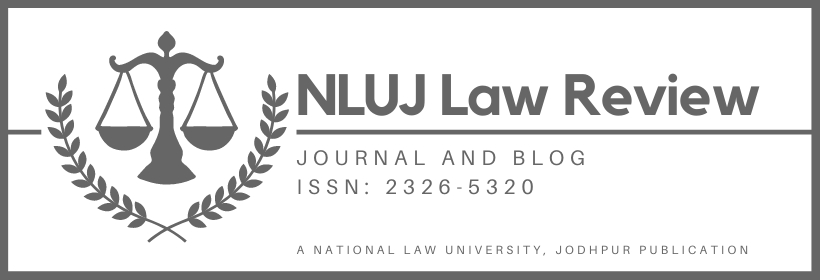The recent mechanism of Emergency Arbitration (“EA”) has gained popularity especially in the times of the COVID-19 pandemic. EA like any other Alternate Dispute Resolution (“ADR”) mechanism is a ‘creature of consent’ deriving its power from an agreement to arbitrate. The main role of EA comes up when there is no arbitral tribunal in place or in a situation where sufficient time would be wasted in setting up one. An EA is capable of granting interim measures or conservatory relief only for a stipulated period of time. It exercises similar if not same functions as that of an ad hoc tribunal which has been constituted for a limited purpose and would immediately be dissolved, once the purpose is served or the said time frame in which such issues have to be decided, lapses. But, being a relatively new concept to the field of arbitration, EA has constantly been surrounded with issues of enforceability and recognition in various jurisdictions.
In India, the issue of enforceability of EA award has arisen time and again and still remained unanswered. The recent case of Ashwani Minda and Anr. v. U-Shin Ltd. & Anr. (“Ashwani Minda”) is one such instance. The Delhi Court in this case dismissed the application for court-ordered ‘interim relief’ under Section 9 of the Arbitration and Conciliation Act, 1996 (“the Act”) filed by a party to a Japan-seated arbitration, following the applicant’s failure to obtain similar relief from an emergency arbitrator.
Previously, the Delhi High Court in the case of Raffles Design International India Pvt. Ltd. & Anr. v. Educomp Professional Education Ltd. & Ors. (“Raffles Design”) ruled that although an EA award was not enforceable under the Act, the applicant was not precluded from applying for court ordered ‘interim measures’ under Section 9 of the Act. The contrary approach taken by the court in Ashwini Minda has again stirred the controversy regarding application of Section 9 which is the only effectual remedy available for enforcement of EA award in India. Moreover, the judgment has raised serious doubts on viability of having foreign-seated EA clauses as an urgent interim relief measure when Indian judiciary does not seem to be in favour of granting enforcement to such awards.
Landscape of Emergency Arbitration in India:
Section 17 of the Act provides that an arbitral tribunal can order interim measures as it deems fit, unless parties expressly agree otherwise. However, Section 17 is not applicable to foreign seated arbitrations, as it is contained in Part I of the Act only applies to where the place of arbitration is in India (Section 2(2)). In the absence of a similar provision for foreign seated arbitrations in Part II of the Act, the emergency award cannot be enforced under the Act and the only method available for enforcing the same would be to file a suit (Raffles Design). The Act is silent on the enforcement of foreign seated emergency awards/orders of the arbitral tribunal. Despite giving recognition to EA by several Indian arbitral institutions in their respective rules,[1] they are not jurisdictionally capable of providing essential relief of enforcement of such awards as only Indian courts are vested with such jurisdiction under Section 9 of the Act.
Although, recourse under the New York Convention is available to enforce a foreign seated award, the New York Convention only envisages enforcement of final awards. Since the decision of an emergency arbitrator is capable of being modified by the arbitral tribunal, and is not final in nature, it is not capable of being enforced under the New York Convention. The enforceability problem of the foreign EAs leaves an adverse impact over the binding effect of the award.
One way to understand the underlying controversy is to interpret the term ‘interim measures’ and analyse the application of Section 9 of the Act pertaining to the enforcement of Emergency Awards in India by scaling it on the basis of Delhi High Court decisions in the cases of Raffles Design and Ashwani Minda.
Tracing the Root Cause of the Prevailing Controversy and the Recent Judgment:
In the Ashwini Minda case, the dispute pertaining to a Joint Venture Agreement between an Indian company (appellant) and a Japanese company (respondent) arose. The appellant, before invoking the arbitration proceedings, invoked the EA under the Japan Commercial Arbitration Association Rules (“JCAA Rules”) seeking interim relief restraining the Respondents from pursuing any action in relation to the open offer to purchase shares in excess of its existing 26% shares in the Joint Venture. However, the relief sought by the appellant was rejected by the Emergency Arbitrator. Thereafter, the appellant filed the petition before the Delhi High Court under Section 9 of the Act to seek interim relief against the respondent. While dealing with the petition, the Delhi High Court limited its adjudication on the maintainability of the petition.
Distinguishing the reasoning in the Raffles Design case cited by the appellants, the Delhi High Court held that unlike in the present case, the Rules governing the Arbitration in Raffles Design case were Singapore International Arbitration Centre Rules (“SIAC Rules”) which impliedly provided that it would not be incompatible for the parties to approach the courts for interim relief. Further in the present case the parties have impliedly excluded the jurisdiction of Indian Courts by agreeing to JCAA Rules which does not warrant the interference of the courts. Further, the court held that on the anvil of ‘doctrine of election’ the parties already exhausted the remedy under Article 77(5) of the JCAA Rules in Japan that binds the parties to carry out interim emergency measures granted by the emergency arbitrator. Despite denying the maintainability of the petition as taking a “second bite at the cherry”, the Delhi High Court inadvertently gave a significant recognition to EA as an alternative remedy at par with the Court’s ‘interim measures’ under Section 9 of the Act.
The Delhi High Court should have flashed upon the significant point to decide whether ‘Emergency Arbitral Tribunal’ can be considered as ‘Arbitral Tribunal’ within the meaning of Section 9 of the Act? Moreover, the Court has not clarified as to whether ‘interim relief’ in the form of EA can be constructed as ‘interim measure’ under Section 9 and considered as similar remedy? If the above can be proved in the affirmative keeping in mind the Law Commission’s 246th Report,[2] then once an ‘award’ or ‘order’ is granted by an ‘Emergency Arbitral Tribunal’ then the ‘interim measures’ under Section 9 of the Act cannot be sought. If the Delhi High Court had broadly discussed this point, it would have become a significant jurisprudence for the settlement of prevailing controversy on the enforcement of an Emergency Arbitration Award in India.
Another important question that needs deliberation is that whether the above reasoning of the Delhi High Court in Ashwini Minda case can be taken in general sense while denying the application of Section 9 of the Act on the anvil of doctrine of election. What if the jurisdiction in the present case had been of the SIAC rather than JCAA, similar to that of Raffles Design? In such a situation, would the ‘interim measure’ under Section 9 of the Act be considered as an alternative remedy at par with ‘interim relief’ in the form of emergency arbitration?
The answer to the above questions seems to lie in the reasoning of the Delhi High Court in Ashwini Minda case, recognizing the doctrine of electionapproach. The interference of the Court is dependent upon the governing rules provided in an arbitration agreement to which the parties subject themselves to and it cannot be applied as a straitjacket formula in every case dealing with the similar question. If the rules agreed between the parties allows interference of the court like in the case of Raffles Design case, then the court might consider the application under Section 9, or else, like in the present case the court dismisses the petition.
The position, however, still remains unclear regarding the enforcement of EA given the lack of statutory recognition and hesitation of the Courts to entertain the petitions seeking enforcement of EA in India.
Global Scenario
Various jurisdictions like Singapore and Hong Kong have recognized interim measures passed by Emergency Arbitral Tribunal. Singapore’s International Arbitration Act, through an amendment, recognized Emergency Arbitrator within its definition of ‘arbitral tribunal’. Similarly, Hong Kong by inserting Part 3A to its Arbitration Ordinance has recognized and enforced EA. Following the lead, various arbitral institutions such as the SIAC, London Court of International Arbitration and International Chamber of Commerce have also recognized this concept by amending their respective rules.
Moreover, with various national courts functioning at a low pace due to the COVID-19 pandemic, the Emergency Arbitration proceedings are fast gaining popularity and have become more attractive to parties opting for international arbitration.
Conclusion
Given recent 2019 Amendment to the Act aimed at expanding the horizons of arbitration practices in India and making India one of the biggest arbitration hubs globally, recognition of Emergency Arbitration becomes indispensable.
However, at this juncture, it can safely be inferred that prevailing wind blows in the direction against granting enforcement to EA in India. The courts in India do not seem to be in favour of enforcing an EA Award. However, at the same time, the numerous advantages of opting for an EA Tribunal cannot be ignored. EAs allows the mutually agreed parties to submit the dispute to a specific jurisdiction and gives recognition to the principle of party autonomy which is fundamental to arbitration mechanism.
Secondly, the issue of confidentiality and efficiency has a major role to back the importance of EA. Courts have their own way of adjudicating upon the matters related to interim measures. The court formalities and procedures are often expensive, time consuming and leads to loss of confidentiality. Emergency Arbitration on the other hand, can provide such relief in a more efficient and confidential manner saving cost as well as valuable time of the parties.
Given the current stand of the Indian courts refusing to enforce emergency awards, parties should be very careful about relying on emergency arbitral awards acquired outside India to protect their rights in the need of the hour.
[1] Part III and Section 18A of Rules of Delhi International Arbitration Center (DAC); Article 29 of Rules of Court of Arbitration of the International Chambers of Commerce-India; Section 33 r/w Section 36(3) of International Commercial Arbitration (ICA); Part IV, Section 20 of Madras High Court Arbitration Center (MHCAC) Rules, 2014; Section 3 of Mumbai Center for International Arbitration (Rules) 2016.
[2] Section 2(d): “Arbitral tribunal” means “a sole arbitrator or a panel of arbitrators and, in the case of an arbitration conducted under the rules of an institution providing for appointment of an emergency arbitrator, includes such emergency arbitrator.”
This article has been authored by Akash Gupta and Ashutosh Chaudhary, students at National Law University, Odisha.



